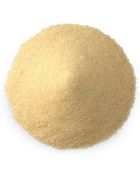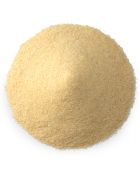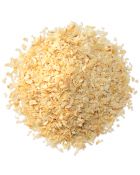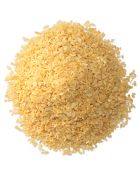Onion and Garlic Market Report - August 2021
US ONION
Olam’s 2021 US onion crop harvest is now ~65% complete. Harvest in the Desert finished in early August and activity has now progressed to Kern and the Central Valley. Diversification of the grower footprint into Oregon and Washington state has helped offset some of the adverse impact of the reduced acreage in Tule Lake earlier this season, driven by widespread drought across large portions of the Western US.
Quality of incoming material from the Desert region has been normal so far. However, overall micro levels are high and XLB and LB feedstock received till date is less than in previous years.
As the harvest is progressing through the Central Valley, fields in the Westside region have been found to have developed significant levels of decay due to fusarium issues. Fusarium is a soil borne fungi that attacks the base plate of the onion and breaks down the onion causing internal decay. This event is likely to potentially reduce the crop by 3-4 %.
At the same time, harvest and plant labor availability is seeing some challenges due to COVID-linked absenteeism leading to sharp increases in daily wages (>10%) and the need for incentives to secure labor. Driver availability for trucking and packaging operations has also been adversely
impacted leading to longer delivery lead times and erratic pickups.
Sharp inflationary conditions are also being experienced in utilities (natural gas rates are up 30%), diesel rates (up more than 35% y/y) and domestic trucking (up >12% for contract and >60% for spot). Corrugated box lead times are up 2-3X and pallet rates are up >50%, despite a decline in lumber prices.
Export shipments continue to see disruptions from non-availability of containers, climbing freight rates, port congestion and last minute cancellation of schedules.
Meanwhile, customer demand - both from Retail/CPG as well as Foodservice - is seeing a gradual ramp up since mid-year with a heavy emphasis on granulated, minced and powder fractions.
EGYPT ONION
The winter yellow onion crop for CY 20-21 is now fully sold or committed.
Olam Egypt’s 2021 white onion harvest was completed the end of June. Favorable weather increased crop yields by 15% over plan, with over 70% of the production coming in as XLB or LB. However, these gains were offset as costs from labor, manufacturing and freight increased 10-15% driven by COVID related challenges. Estimated exports for the first half of 2021 are likely to be 8k-10k MT, slightly higher than last year.
OTHER ORIGINS
INDIA Dried onion production for the current year came in between 80k and 85k MT, about a 20% increase from last year. Exports for the first half of 2021 are expected to be significantly larger from last year’s at about 40k-42k MT. Despite challenges caused by COVID, production and shipments have proceeded.
CHINA Dried onion output for 2020-2021 is at approximately 16k MT. Exports increased sharply in the first half of 2021 despite shipment challenges. Most of the China crop has been placed. Carry-out levels will be low until the new crop arrives in the 4th quarter.
FUTURE OUTLOOK
US
- A 15-20% price increase is expected in the coming season. Specialty items like toasted, roasted, customized specs and BI/color sensitive fractions will see an increase of 25-30%. Costs for irradiation will likely increase 5%. The ocean and domestic freight market is likely to remain buoyant for the next 6-9 months. Erratic availability for export shipping scheduling and containers may still disrupt supply.
- The availability of key fractions is improving to meet normal demand. However, granulated, minced and ground fraction availability remains tight. Additionally, XLB availability for all fractions will remain challenged until the third quarter of 2021.
- If precipitation returns to normal in the winter of 2021, costs will stabilize in the next contract cycle, to be reflected in 2022-2023.
Egypt
- Available inventory at the end of the year is estimated to be 2k-3k MT. Based on the final production estimate of about 15k-17k MT, available inventory for export in the second half if this year is limited to 5k-7k MT. Pricing is expected to remain stable through the month of August. However, an upward price correction is expected in the third and fourth quarter of CY21.
- Price realizations have been low, making farmer sentiment for the next planting season uncertain. Context and environmental conditions like weather, COVID and shipping availability need to be watched.
Other Origins
- INDIA If end-of-year carry-out inventories for 2021 are similar to last year levels (25k-35k MT) the available inventory for export in the second half of 2021 will be limited to 20k-25k MT, only 50-60% of the exported amounts for the first half of the year. Rates for ocean freight will continue to increase through the remainder of the year, resulting in likely price increases in the coming months.
While farmer sentiment for the next crop planting is positive, weather, COVID and shipping conditions need to be watched to determine what will be planted for the next crop cycle.
- CHINA In the coming months, upward price correction is likely in order to align with other origins, driven by lower inventories from the previous crop. Farmers’ CY22 crop planting sentiment is positive, but weather, COVID and shipping conditions need to be watched.
US GARLIC
Harvest for CY21 began in the first half of July and is about 20% complete. Planted acreage is marginally higher than last year. Drought and water management challenges may have adversely impacted yields in Arizona and desert regions, and the shortened crop will impact costs. However, the decrease is likely to be offset somewhat by yields in California’s Central Valley, which came in better than planned.


Labor issues for harvest and packaging and cost increases due to COVID have also affected US Garlic. Pricing will be impacted for recontracts later this year. Challenged crop returns and tightening water restrictions due to drought have caused growers to sharply increase prices for CY22.
Restricted availability for XLB, granulated and minced is likely to continue up to the third quarter, until new crop inventory has been produced.
CHINA GARLIC
Harvest was completed over May and June 2021. Shandong Province’s production was down by 15-20% from 2020. Increased production in other provinces offset the decrease somewhat, but overall production is down compared to last year. This led to a price spike for garlic flake and fresh garlic by 20-25% from levels prevailing at the beginning of January.
The sentiment remains bullish in the Chinese market, and speculators are actively covering open market flake at the moment. Destination markets, particularly North America, have seen demand increases due to COVID-19, and have stepped in to secure inventory coverage as prices strengthened.
FUTURE OUTLOOK
US
- Dried garlic prices are likely to increase 15-20%, caused by raw material and labor shortages and COVID-induced inflation. Minced garlic and extra low micro will have constricted availability in the near-to-medium term. Toasting and irradiation operations are at 100% capacity. Increased demand will result in longer lead times and increased costs.
China
- Customers from all major markets are actively securing coverage. They are increasingly coming to market to recontract garlic at prevailing price levels. The probability of any stabilization or decrease in prices is low as this momentum grows.
- Origin flake prices are projected to increase 5-10% from current levels through the end of Q3 2021. The next inflection point will be in October 2021, when planting and fresh garlic cold store estimates are known.




